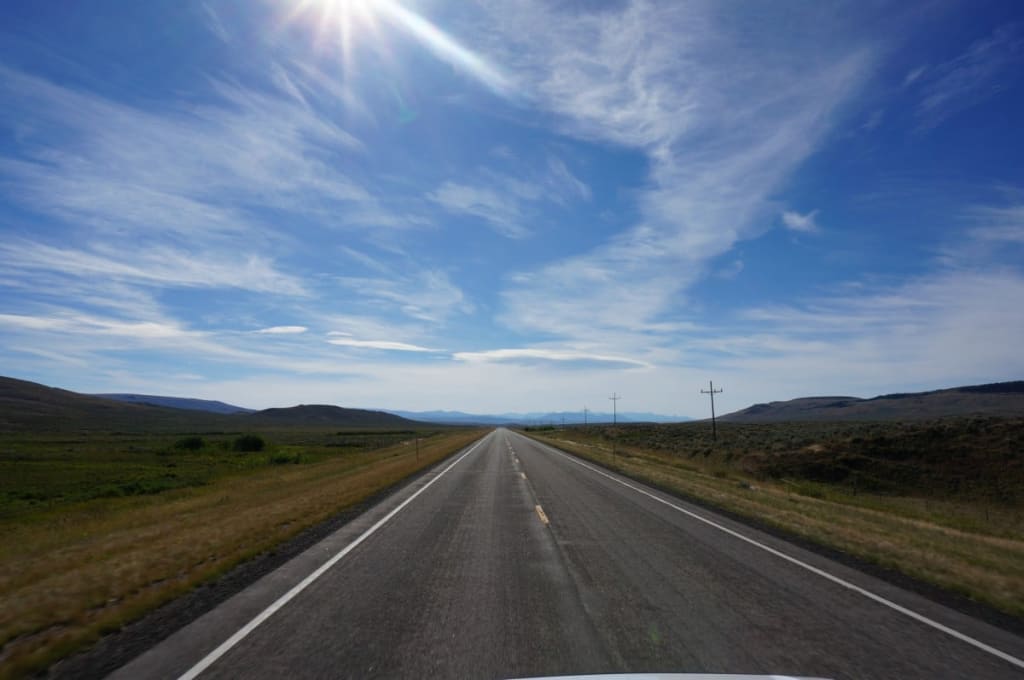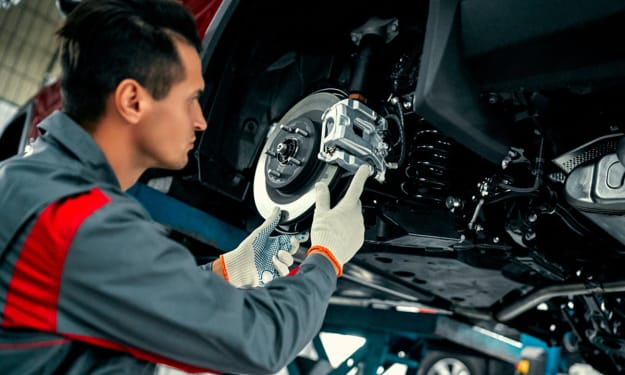Memorial Day Marks the Start of Summer and the 100 Deadliest Days for Drivers
Summer driving is associated with the mostly deadly time on America's roadways.

Memorial Day marks the unofficial start of summer for many Nevadans, with the long weekend marking the first barbecue or camping trip of the year, but for many traffic experts the day marks something a little more eerie—the “100 Deadliest Days”. The AAA coined this term to describe the spike in car crashes during the period between Memorial Day and Labor Day, especially for teen drivers. The AAA Foundation for traffic safety suggests that statistics show this spike can largely be attributed to more people on the road during these months, especially younger and more inexperienced individuals. The inexperience of the drivers, paired with longer hours on the road, and fatigue from hot temperatures can result in a deadly combination [1]
Are Teen Drivers Really to Blame?
While Teen drivers may not be the sole cause of this hike in traffic fatalities over the summer, they certainly contribute a large percentage. AAA reports that about thirty percent of teens killed in car crashes nationwide happen within this timeframe, and attribute this to primarily three factors: Increased free time, More Passengers, and Inexperience.
• Increased Free Time—during the school year, teens spend an average of eight hours at school, significantly reducing the free time which can be utilized to get behind the wheel. Additionally, the bulk of their driving may be to and from school, as well as to extracurricular activities, meaning they are taking familiar roadways which they have practice taking on a daily basis. [2].
• More Passengers behind the Wheel— young people are more likely to spend summer hanging out with friends—resulting in several teens in a single vehicle. A single teen passenger in a car with a teen driver can increase the risk of crashing by nearly forty-four percent [3]. Additionally, in fifteen percent of teen-involved car accidents during the 100 days period, another teenage passenger was involved.
• Inexperience—As Mentioned prior, going to and from school is probably a comfortable route for your teen since they take it every day, but it does not mean that they are ready to drive longer distances to maybe Lake Tahoe or a waterpark in Henderson. Your teen may be tempted to jump on the highways in Reno or Las Vegas, but their inexperience can put both themselves and others at risk.
Southern Nevadans Concerned About Teen Drivers
Since the beginning of 2024, there have been fourteen fatalities on Southern Nevada roads involving those twenty-one or younger, with ten of these being teens [4]. This number, compiled before the “100 Deadliest Days” mark is concerning, since an increase is probable. Erin Breen, the director of the Road Equality Alliance Project at UNLV monitors this data and cites 2023 numbers as a warning of what might be to come—a total of seventeen teen deaths with ten occurring during the time between Memorial and Labor Day.
Breen also offered some insight into the teen fatalities that occurred this year—eleven of the fourteen occurred at night, six of the fourteen on motorcycles, and six deaths involved turning vehicles. She also notes that at this point last year, there had been less than ten teen fatalities. Breen states that as scary as this seems, a lot can be done to ensure your child’s safety and she suggests following up on kid’s whereabouts, set some rules and curfews to prevent excessive night driving, and follow up on consequences when these rules are broken.
Can Parents Prepare their Teens for the “100 Deadliest Days”?
The simple answer is: Yes. A parent can do a considerable number of things to protect and prevent their teen from becoming a stat. A National Safety Commission survey found that many parents feel more inclined to loosen household driving rules in the summer, but instead here is a list of good practices when preparing your teen driver for the road:
• Practice New Driving Skills with Your Teen: Just because your teen got their license, doesn’t mean you should stop supervising their driving—especially when it comes to new skills. Nevada highways, especially in Reno and Las Vegas, can get busy and congested, so it is best to take a few practice trips with your teen so they have a little practice and confidence before making a solo trip in the “100 days” period.
• Set Curfews to Limit Nighttime Driving: The fatal crash rate for teen’s doubles at night, and while Nevada requires teens to have supervised nighttime driving hours before obtaining their license, they may still lack the experience to do so. Nighttime driving comes with risks like reduced visibility, as well as an increased number of drunk and reckless drivers. Additionally, Nevada Law states that drivers under the age of eighteen may not drive between 10 p.m. and 5 p.m. unless they are traveling to and from a scheduled event (school or work related) [5]. In certain parts of Reno and Las Vegas, like the Strip and the Reno Gaming District, this curfew is 9 p.m., unless with an adult.
• Set Limits on Who Your Teen Can Drive—undoubtedly, getting a driver’s license opens new social doors for teens, but it is important to note the significant risk of distraction when several teens are in a vehicle together. Nevada law places a passenger restriction on young drivers, only allowing them to transport only immediate family members and those over eighteen for the first six months of obtaining a license. Some parents may find it wise to extend this rule post-six months to help their teen avoid distracted driving.
• Help Your Teen Identify All Types of Distractions While Driving—Most of us know that using a cell phone, taking a phone call, or talking with passengers can constitute as distracted driving. However, many aren’t privy to the fact eating and drinking, messing with the radio or navigation system, putting on makeup, etc. can all constitute as “distractions”. Help your teen identify some of these distractions and discuss ways to reduce them while on the road.
While the “100 Deadliest Days” can be a daunting statistic for both parents and teen drivers alike, it is important to note that staying engaged in your teen’s driving habits can significantly ameliorate their risks while on the road. Education is one of the best forms of prevention, and sitting down with your teen and leading a conversation on their safety can help keep both them and the community a little safer.
[1] https://aaafoundation.org/assessing-fatality-rates-in-crash-involvement-for-motorists-and-non-motorists-in-teen-driver-crashes-by-risk-factor/
[2] https://drivesmartgeorgia.com/blog/100-deadliest-days-3/
[3] https://aaafoundation.org/2017-traffic-safety-culture-index/
[4] https://news3lv.com/news/local/community-concerned-as-teen-traffic-crashes-continue-to-rise-on-southern-nevada-roadways
[5] https://dmv.nv.gov/nvdlteens.htm
About the Creator
Enjoyed the story? Support the Creator.
Subscribe for free to receive all their stories in your feed. You could also pledge your support or give them a one-off tip, letting them know you appreciate their work.





Comments
There are no comments for this story
Be the first to respond and start the conversation.